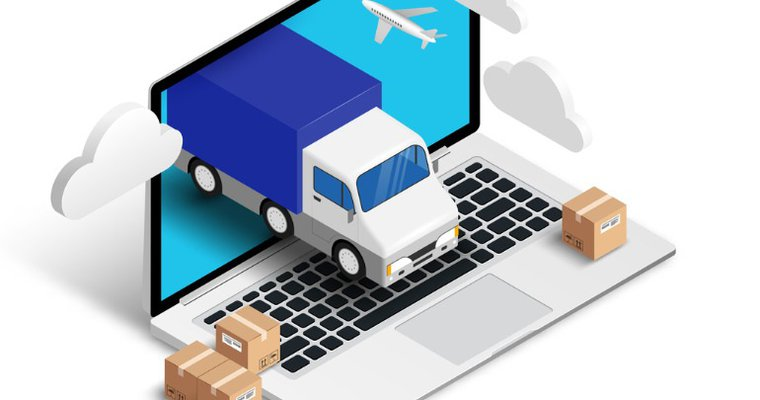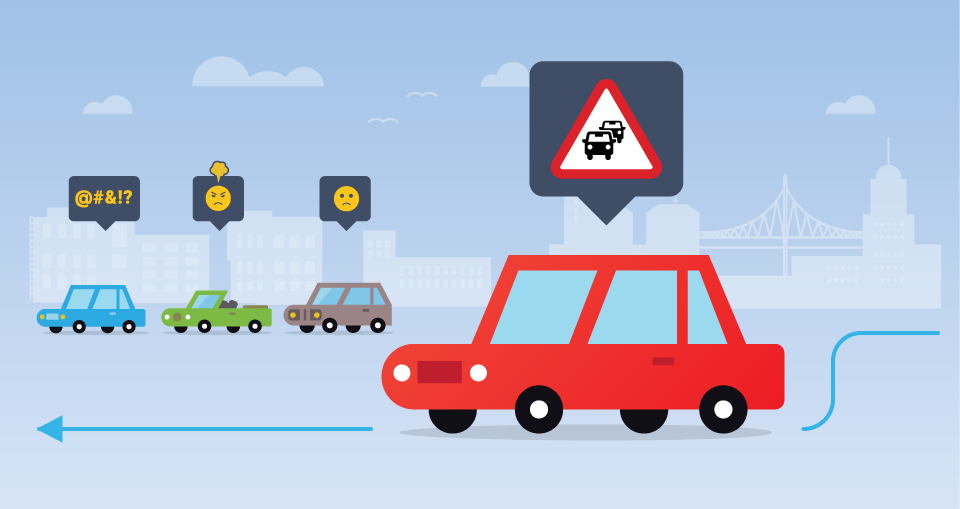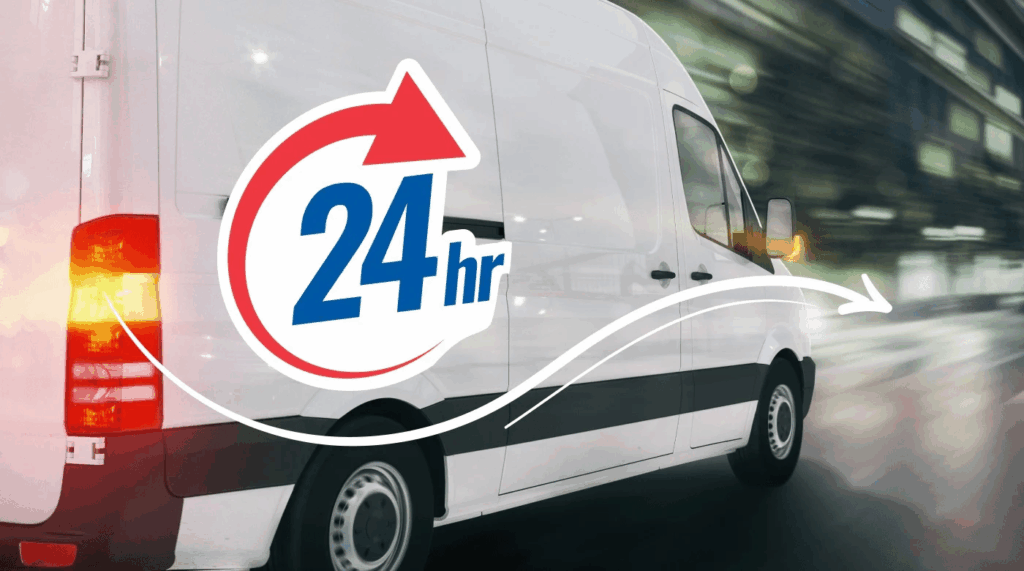Die Zukunft des E-Commerce-Versands: KI, Drohnen und Lieferung am selben Tag
E-Commerce-Versand geht es nicht mehr nur um den Transport von Paketen von einem Ort zum anderen. Er ist zum Herzstück des Online-Handels geworden. Die Kunden erwarten schnelle, präzise und umweltfreundliche Lieferungen. Für Unternehmen ist der Versand der Moment der Wahrheit, der über Treue oder Verlust von Kunden entscheiden kann. Künstliche Intelligenz, Drohnen und die Lieferung am selben Tag sind wegweisend für die Umgestaltung der Logistik durch die Technologie.
In diesem Artikel wird untersucht, wie diese Innovationen den Versand im E-Commerce verändern, welche Herausforderungen bestehen bleiben und was Unternehmen wissen müssen, um wettbewerbsfähig zu bleiben.

Warum verändert sich der Versand im E-Commerce so schnell?
Das Kundenverhalten hat sich im letzten Jahrzehnt dramatisch verändert. Online-Käufer geben sich nicht mehr mit "Standardversand in 5-7 Tagen" zufrieden. Stattdessen wollen sie schnellere, billigere und transparentere Lieferoptionen.
Dieser Wandel wird von mehreren Kräften vorangetrieben:
- Steigende Kundenerwartungen: Die Käufer vergleichen heute jedes Geschäft mit Amazon oder anderen Plattformen für schnelle Lieferung. Wenn ein Händler einen Versand am selben Tag anbietet und ein anderer nur eine Standardlieferung, liegt die Wahl auf der Hand.
- Grenzüberschreitender Geschäftsverkehr: Globale Aufträge erfordern eine effiziente internationale Logistik. Ein Geschäft in den USA, das an einen Kunden in Asien verkauft, muss Spediteure, Zoll und Lösungen für die letzte Meile integrieren.
- Druck auf die Nachhaltigkeit: Umweltfreundliche Versandmethoden werden zu einem Verkaufsargument, denn die Käufer bevorzugen Marken, die recycelbare Verpackungen und eine umweltfreundlichere Logistik verwenden.
- Unterbrechung der Technologie: KI, Drohnen und Robotik schreiben die Regeln der Logistik neu und setzen neue Standards für den E-Commerce-Versand.
Der E-Commerce-Versand hat sich von einer einfachen Unterstützungsfunktion zu einer wichtigen Strategie für Wachstum und Kundenbindung entwickelt.
Wie verändert künstliche Intelligenz den Versand im E-Commerce?
Künstliche Intelligenz verändert die Logistik bereits hinter den Kulissen, aber seine Auswirkungen auf den Versand im elektronischen Handel werden sowohl für Unternehmen als auch für Verbraucher immer deutlicher.
Bessere Routenplanung

KI-Algorithmen analysieren umfangreiche Datensätze, darunter Verkehrsmuster, Wetterdaten und Lieferdichte, um die Routen der Fahrer zu optimieren. Eine einzige KI-gesteuerte Routenänderung kann bei Hunderten von Paketen Stunden an Zustellzeit einsparen.
Vorteile für Unternehmen:
- Niedrigere Kraftstoffkosten und weniger Verspätungen
- Erhöhte Produktivität der Fahrer
- Genauere geschätzte Lieferzeiten für Kunden
Vorausschauende Nachfrageprognose
AI lernt aus früheren Bestellungen, saisonalen Trends und sogar lokalen Ereignissen, um die künftige Nachfrage vorherzusagen. So kann das System beispielsweise vorschlagen, in kälteren Regionen vor einer Kältewelle mehr Winterjacken auf Lager zu haben.
Ergebnisse:
- Schnellerer Versand, weil die Produkte näher beim Käufer sind
- Verringerung des Lagerabfalls, indem nur das gelagert wird, was sich verkaufen lässt
- Verbesserte Kundenerfahrung durch weniger Probleme mit "nicht auf Lager".
Lager-Automatisierung
KI-gesteuerte Robotersysteme nehmen, verpacken und sortieren Produkte mit beeindruckender Geschwindigkeit und Genauigkeit. Anstatt dass Arbeiter jeden Tag kilometerweit durch riesige Lagerhäuser laufen, bringen Roboter die Waren direkt zu ihnen.
Chatbots und Kundenservice

KI-gesteuerte Chatbots können gängige Fragen wie "Wo ist meine Bestellung?" oder "Wie kann ich dieses Produkt zurückgeben?" sofort beantworten und den Versandstatus aktualisieren, ohne dass ein Mensch eingreifen muss.
KI macht den Versand im E-Commerce schneller, intelligenter und kundenfreundlicher. Unternehmen, die diese Möglichkeiten ignorieren, laufen Gefahr, hinter die Konkurrenten zurückzufallen, die sie nutzen.
Können Drohnen den Versand im E-Commerce wirklich neu definieren?
Vor ein paar Jahren schien die Idee, dass Drohnen Pakete an Ihrer Haustür abliefern, noch futuristisch, aber Pilotprogramme sind bereits im Gange. Amazon, UPS und DHL haben viel in Drohnentests investiert.
Vorteile der Zustellung per Drohne
- Ultra-schneller Dienst: Drohnen können leichte Gegenstände in weniger als 30 Minuten ausliefern.
- Fernzugriff: Ländliche oder schwer zugängliche Gemeinden können endlich zuverlässig beliefert werden.
- Geringere Überlastung: Drohnen reduzieren die Zahl der Lieferwagen in den Städten und verringern so den Verkehr und die Umweltverschmutzung.
Stellen Sie sich vor, Sie bestellen Telefonzubehör, Medikamente oder Lebensmittel online und bekommen sie in weniger als einer Stunde in Ihren Garten geliefert. Für viele Branchen könnte dies die Art und Weise verändern, wie Kunden den E-Commerce-Versand betrachten.
Herausforderungen der Drohnenzustellung
- Luftraumordnung - Die Regierungen müssen Rahmenbedingungen schaffen, die den Betrieb von Drohnen ermöglichen, ohne die Sicherheit zu beeinträchtigen.
- Gewichtsbeschränkungen - Die derzeitige Drohnentechnologie unterstützt nur kleine Pakete, oft unter 5 Kilogramm.
- Wetterabhängigkeit - Starke Winde, starker Regen oder Schnee können Drohnenflüge unterbrechen und machen sie in manchen Regionen weniger zuverlässig.
- Öffentliche Akzeptanz - Bedenken in Bezug auf Lärm und Privatsphäre könnten die Akzeptanz in belebten städtischen Gebieten bremsen.
Die Lieferung per Drohne ist vielversprechend, doch wird sie sich wahrscheinlich zunächst auf medizinische Produkte, kleine elektronische Geräte und dringende Artikel ausdehnen, bevor sie sich im E-Commerce durchsetzt.
Warum ist die Lieferung am selben Tag für den E-Commerce wichtig?

Lieferung am selben Tag ist eine der bahnbrechendsten Entwicklungen im E-Commerce-Versand. Sie verändert die Art und Weise, wie Kunden einkaufen und wie Unternehmen arbeiten.
Was treibt die Erwartungen an den gleichen Tag?
- Kultur auf Abruf: Apps für die Lieferung von Lebensmitteln haben die sofortige Befriedigung zur Normalität gemacht.
- Impulskäufe: Die Kaufbereitschaft der Kunden steigt, wenn sie wissen, dass das Produkt noch am selben Tag eintrifft.
- Differenzierung im Wettbewerb: Der Versand am selben Tag schafft einen klaren Vorteil gegenüber langsameren Konkurrenten.
Die geschäftlichen Auswirkungen von Same-Day-Delivery
Die Lieferung am selben Tag erfordert ein neu strukturiertes Logistikmodell:
- Dezentrale Erfüllungszentren in der Nähe von städtischen Knotenpunkten, um die letzte Meile zu verkürzen.
- Effiziente Kuriernetze der Einsatz von Fahrern aus der Gig-Economy oder lokalen Flotten senkt die Kosten.
- Integrierte E-Commerce-Versandsysteme sicherstellen, dass die Bestellungen sofort von der Kasse zur Ausführung gelangen.
Unternehmen, die taggleiche Lieferungen anbieten, verzeichnen häufig höhere Konversionsraten, weniger abgebrochene Warenkörbe und mehr Wiederholungskäufe. Die Umsetzung ist zwar eine Herausforderung, aber sie ist zu einer wichtigen Komponente der Kundenbindung geworden.
Welche Herausforderungen stehen dem E-Commerce-Versand noch im Wege?
Trotz Innovation, E-Commerce-Versand steht vor anhaltenden Herausforderungen, die langfristige Lösungen erfordern.
Steigende Kosten
Treibstoffzuschläge, Arbeitskräftemangel und die hohen Kosten für die Zustellung auf der letzten Meile sind nach wie vor ein großes Problem. Der kostenlose Versand bei gleichzeitiger Wahrung der Gewinnspanne ist einer der schwierigsten Balanceakte im Online-Handel.
Nachhaltigkeit Druck

Die Käufer legen zunehmend Wert auf umweltfreundliche Praktiken. Überdimensionierte Verpackungen, die Verwendung von Einwegplastik oder der Vorrang von Schnelligkeit vor Klimaneutralität können dem Ruf der Marke schaden. Unternehmen müssen ihre Verpackungen neu gestalten und Programme zum Kohlenstoffausgleich prüfen.
Internationale Vorschriften
ZollabfertigungEinfuhrsteuern und die Koordination der Spediteure sind große Hindernisse für den grenzüberschreitenden E-Commerce-Versand. Ein schlecht verwalteter internationaler Versand kann zu Verzögerungen, verlorenen Paketen und unzufriedenen Kunden führen.
Die Lösung dieser Probleme wird darüber entscheiden, welche Unternehmen in der nächsten Phase des Online-Handels erfolgreich sein werden.
Wie sollten sich Unternehmen auf die Zukunft des E-Commerce-Versands vorbereiten?
Unternehmen müssen sich auf die Zukunft vorbereiten, indem sie in flexible, technologiegestützte Strategien investieren. Praktische Schritte umfassen:
1. Investition in KI-gesteuerte Logistik
Nutzen Sie vorausschauende Analysen, intelligentes Routing und Lagerautomatisierung, um Kosten zu senken und Lieferzeiten zu verkürzen.
2. Sondierung neuer Liefermodelle
Pilotprojekte mit Drohnen, autonomen Fahrzeugen und sogar Roboterkurieren können einen Wettbewerbsvorteil verschaffen.
3. Vorrangige Zustellung am gleichen Tag und am nächsten Tag
Selbst wenn sie auf Produkte mit hoher Nachfrage oder bestimmte Regionen beschränkt sind, ist ein schnellerer Versand ein wichtiger Wachstumsfaktor.
4. Fokus auf Nachhaltigkeit

Verwenden Sie recycelbare Verpackungen, reduzieren Sie überschüssiges Material und arbeiten Sie mit Transportunternehmen zusammen, die einen klimaneutralen Versand anbieten.
5. Integration von Multi-Carrier-Lösungen
Eine flexible E-Commerce-Versandplattform ermöglicht es Unternehmen, Tarife, Laufzeiten und Zuverlässigkeit in verschiedenen Ländern zu vergleichen. mehrere Beförderer.
Wenn Unternehmen sich jetzt vorbereiten, können sie sowohl die aktuellen Herausforderungen als auch die zukünftigen Erwartungen bewältigen.
Wie wird das nächste Jahrzehnt des E-Commerce-Versands aussehen?
In Zukunft wird sich der Versand im elektronischen Handel dramatisch verändern:
- KI-optimierte Logistik: Die Bestellungen werden vorweggenommen, bevor die Kunden den Kauf abschließen.
- Drohnengestützte Lieferungen: Dringende und leichte Pakete werden innerhalb von Minuten in die Luft gebracht.
- Gleicher Tag als neuer Standard: Wenn Sie länger als 24 Stunden auf die Lieferung warten, kann sich das schnell überholt anfühlen.
- Nachhaltige Praktiken: Umweltfreundliche Logistik wird nicht nur ein Trend, sondern eine Notwendigkeit sein.
Diese Veränderungen werden die Art und Weise neu definieren, wie Unternehmen die Auftragsabwicklung handhaben und wie Verbraucher Online-Shopping erleben.
Schlussfolgerung
Der E-Commerce-Versand tritt in eine neue Phase ein, die durch künstliche Intelligenz, Drohnen und Lieferung am selben Tag vorangetrieben wird. Die Kunden erwarten Geschwindigkeit, Präzision und Transparenz, während die Unternehmen ein Gleichgewicht zwischen Effizienz und Nachhaltigkeit finden müssen.
Durch den Einsatz innovativer Technologien und integrierter Logistiklösungen kann sich der Versand im E-Commerce von einer kostenintensiven Herausforderung zu einem wichtigen Motor für Wachstum und Kundenbindung entwickeln.
Für Unternehmen, die der Zeit voraus sein wollen, sind Investitionen in eine zukunftsfähige Logistik nicht optional, sondern unerlässlich.
👉 Entdecken Sie mehr über innovative Versandlösungen unter Postpaket.
Einblicke in die Industrie
Nachrichten über den Posteingang
Nulla turp dis cursus. Integer liberos euismod pretium faucibua







